4 AFRL scientists, engineers selected as 2024 AIAA Associate Fellows
WRIGHT-PATTERSON AIR FORCE BASE, Ohio (AFRL) – Drs. Joshua Deaton, Jerrod Hofferth, Kerianne Hobbs and Nick Morley with the Air Force Research Laboratory, or AFRL, were recognized as 2024 Associate Fellows of the American Institute of Aeronautics and Astronautics, or AIAA, in a news release Oct. 3, 2023.
“The members of the Class of 2024 Associate Fellows embody the ingenuity and commitment that are crucial for developing solutions to the complex questions raised across the aerospace community,” AIAA Executive Director Dan Dumbacher said in the release.
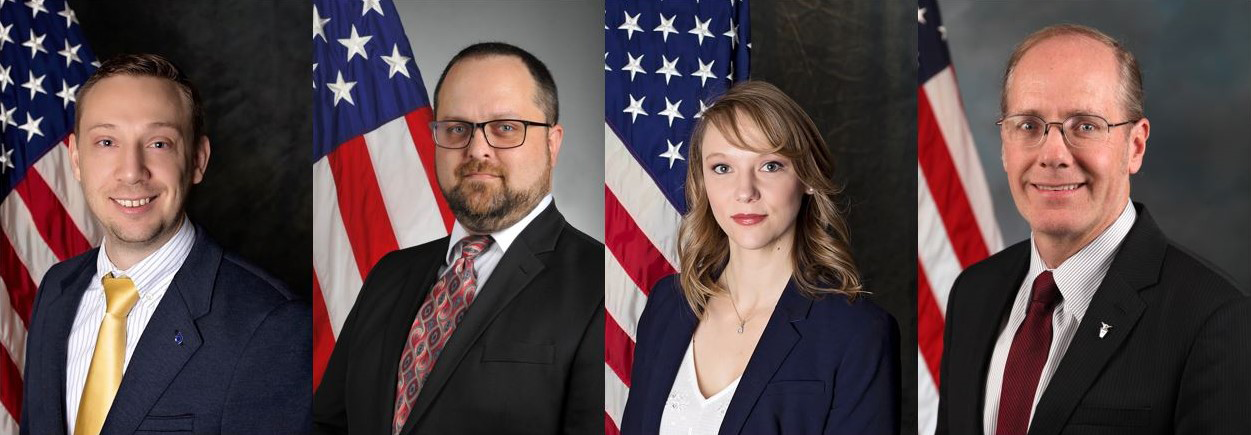
Drs. Joshua Deaton, Jerrod Hofferth, Kerianne Hobbs and Nick Morley with the Air Force Research Laboratory, or AFRL, are recognized as 2024 Associate Fellows of the American Institute of Aeronautics and Astronautics, or AIAA, in a news release Oct. 3, 2023
According to AIAA, Associate Fellows must be in good standing as an AIAA senior member with at least 12 years of professional experience and be recommended by three AIAA Associate Fellows. Only one member of the institute for every 150 members is selected as an Associate Fellow each year by the review committee.
According to the AIAA’s Constitution, Associate Fellows are “persons who have accomplished or been in charge of important engineering or scientific work, or who have done work of outstanding merit or have otherwise made outstanding contributions to the arts, sciences or technology of aeronautics or astronautics.”
Joshua Deaton
As the effectiveness-based multidisciplinary design optimization, or MDO, tech area lead for the Multidisciplinary Science and Technology Center, or MSTC, in the Aerospace Systems Directorate at AFRL, Deaton is responsible for technical and strategic direction of over 20 team members executing cutting-edge research in diverse areas critical to advancing MDO for aerospace system design. He also serves as an MDO subject matter expert across AFRL, the U.S. Navy, Defense Advanced Research Projects Agency, NASA, academia and industry, according to the AIAA award citation.
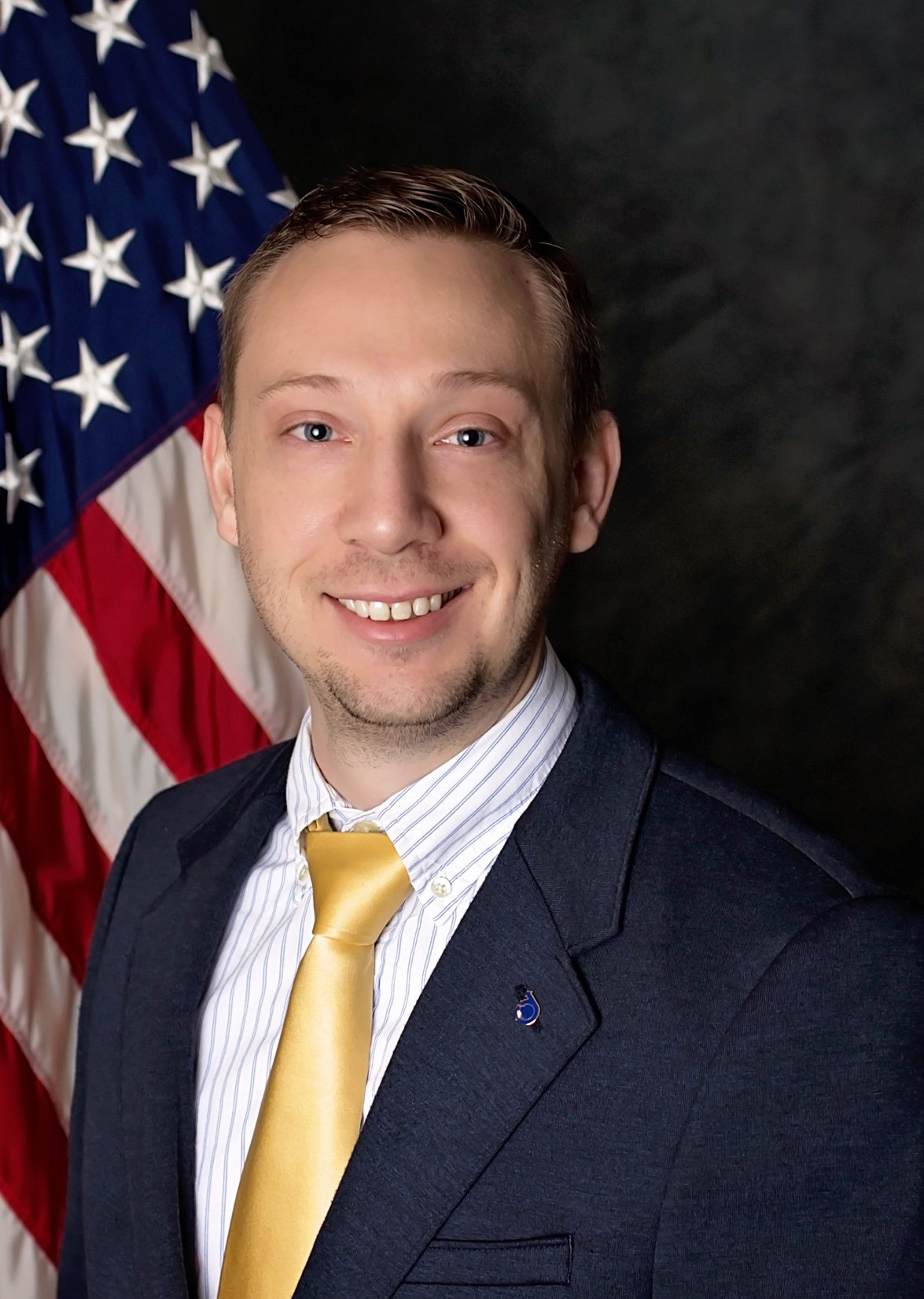
Dr. Joshua Deaton, tech area lead, Multidisciplinary Science and Technology Center, Aerospace Systems Directorate, Air Force Research Laboratory, was recognized as a 2024 Associate Fellow of the American Institute of Aeronautics and Astronautics, or AIAA, in a news release Oct. 3, 2023. Deaton is responsible for technical and strategic direction of 26 team members executing cutting-edge research in diverse areas critical to advancing multidisciplinary design optimization, or MDO, for aerospace system design. “I am honored to be selected as an AIAA Associate Fellow for contributions in multidisciplinary design optimization methods of aerospace vehicles and topology optimization,” Deaton said. “While a humbling personal achievement, it is as much a recognition of the visionary work throughout the AFRL Multidisciplinary Science and Technology Center that is advancing the state-of-the-art in aerospace system design.” (U.S. Air Force photo)
Some of Deaton’s individual research contributions include scholarship in the field of thermoelastic topology optimization, or TO, a seminal journal article on thermal stress constraints in TO and TO for aeroelastic design, according to the AIAA award citation.
“I am honored to be selected as an AIAA Associate Fellow for contributions in multidisciplinary design optimization methods of aerospace vehicles and topology optimization,” Deaton said. “While a humbling personal achievement, it is as much a recognition of the visionary work throughout the AFRL Multidisciplinary Science and Technology Center that is advancing the state-of-the-art in aerospace system design.”
As a technical leader of MDO-oriented research, Deaton directed over $7.5 million in contracted research and development, ensuring industry transition of MDO methods to change the way the Air Force and defense industry develop and assess future aerospace system concepts, according to the AIAA award citation. Deaton’s work with effectiveness-based design, which represents a paradigm shift from design for performance to design for mission effectiveness, has enabled Air Force leaders to make risk-quantified, data-informed decisions for system development and technology investment.
“AFRL sponsored my Ph.D. research over 10 years ago in multidisciplinary design and topology optimization and has since supported my research as a contractor and government civilian,” Deaton said. “My technical and research achievements have been enabled by dozens of mentors and professional development opportunities within AFRL. Over the years, leaders within AFRL and the MSTC have helped focus my efforts onto meaningful research problems that impact the design of Air Force systems of tomorrow.”
Deaton continues to mentor the next generation of aerospace professionals through various programs, as well as through teaching at Wright State University.
Jerrod Hofferth
“I am honored to be recognized by my colleagues in the aerospace field, and grateful for the opportunities I have had at Texas A&M University and the Air Force Research Laboratory,” said Hofferth, senior aerospace research engineer, Aerospace Systems Directorate. “It is critical that we continue to invest in our capabilities and workforce for hypersonics across the science and technology and test and evaluation communities – I am proud to be able to contribute meaningfully to this work.”
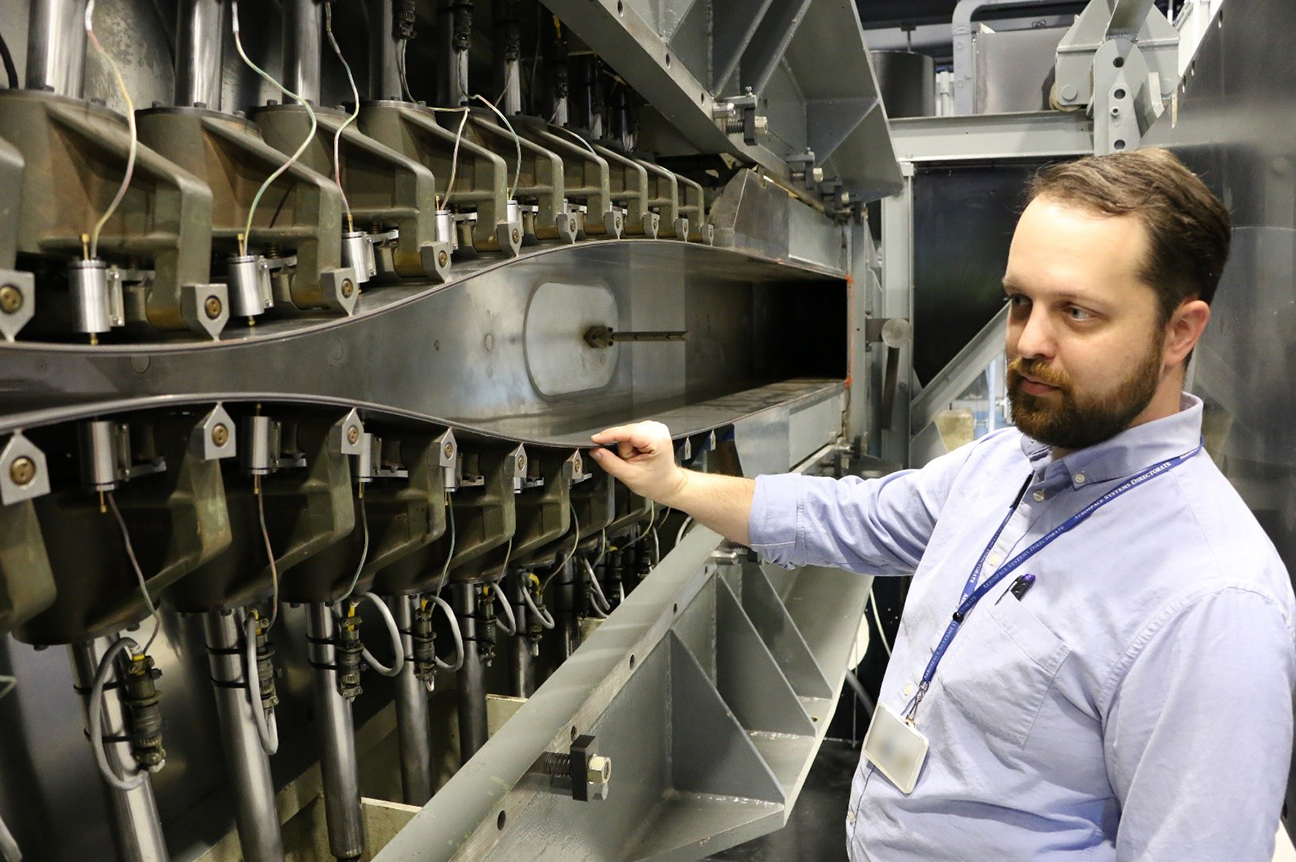
Dr. Jerrod Hofferth, senior aerospace research engineer, Aerospace Systems Directorate, Air Force Research Laboratory, who served as the technical lead on the Tunnel D reactivation project, pointing out the Tunnel D flexible plate nozzle in June 2018. Hofferth was recognized as a 2024 Associate Fellow of the American Institute of Aeronautics and Astronautics, or AIAA, in a news release Oct. 3, 2023. (U.S. Air Force photo illustration / Bradley Hicks)
Among his accomplishments, Hofferth was responsible for the reactivation and modernization of unique, high-value supersonic and hypersonic wind tunnel facilities that were previously decommissioned, according to the AIAA award citation.
One tunnel, the Mach 6 Quiet Tunnel at Texas A&M, was brought back online in 2010, while the other, von Kármán Gas Dynamics Facility’s Wind Tunnel D at Arnold Air Force Base in Tennessee, was reestablished in 2019. Both tunnels remain in operation today.
The tunnel at Texas A&M operates as the nation’s only long-duration, low-disturbance hypersonic wind tunnel, which is uniquely suitable for acquisition of critical validation datasets for hypersonic boundary-layer stability computations.
Hofferth served as chief engineer and system architect for the reactivation of the Wind Tunnel D, which operates as a comprehensive state-of-the-art research facility and platform for collaborative interaction between DOD test and research organizations, as well as academia, small-businesses and major industry, according to the AIAA award citation. The facility has been employed for almost two dozen research campaigns studying fluid-structure interactions, scramjet inlet operability, directed energy, stores separation, fundamental and applied aerodynamics, science of test and diagnostics development.
This facility and the work conducted therein have been nationally recognized for enabling or directly contributing to several academic degrees, peer-reviewed journal publications, conference proceedings, successful flight-test programs, commercialized diagnostics products, academic STEM outreach efforts, hypersonics workforce development through training, internships and fellowship programs, according to the AIAA award citation.
Hofferth has shared his experience and knowledge through participation in the Supersonic Tunnel Association International and a DOD-NASA Wind Tunnel Characterization Working Group, according to the AIAA award citation. He also contributes to a portfolios of research spanning boundary-layer stability and transition, multi-body aerodynamics, boundary-layer stability and transition, additive manufacturing, weather effects and diagnostics development.
Kerianne Hobbs
“When AFRL has multiple people selected as fellows or associate fellows at AIAA or another professional society in any given year, it reflects on AFRL’s relevance and leadership in aerospace research,” said Hobbs, ACT3 safe autonomy and space lead, Sensors Directorate. “Associate fellowship means that the contributions of scientists and engineers go beyond their impact to AFRL by pushing the larger aerospace community into the future.”
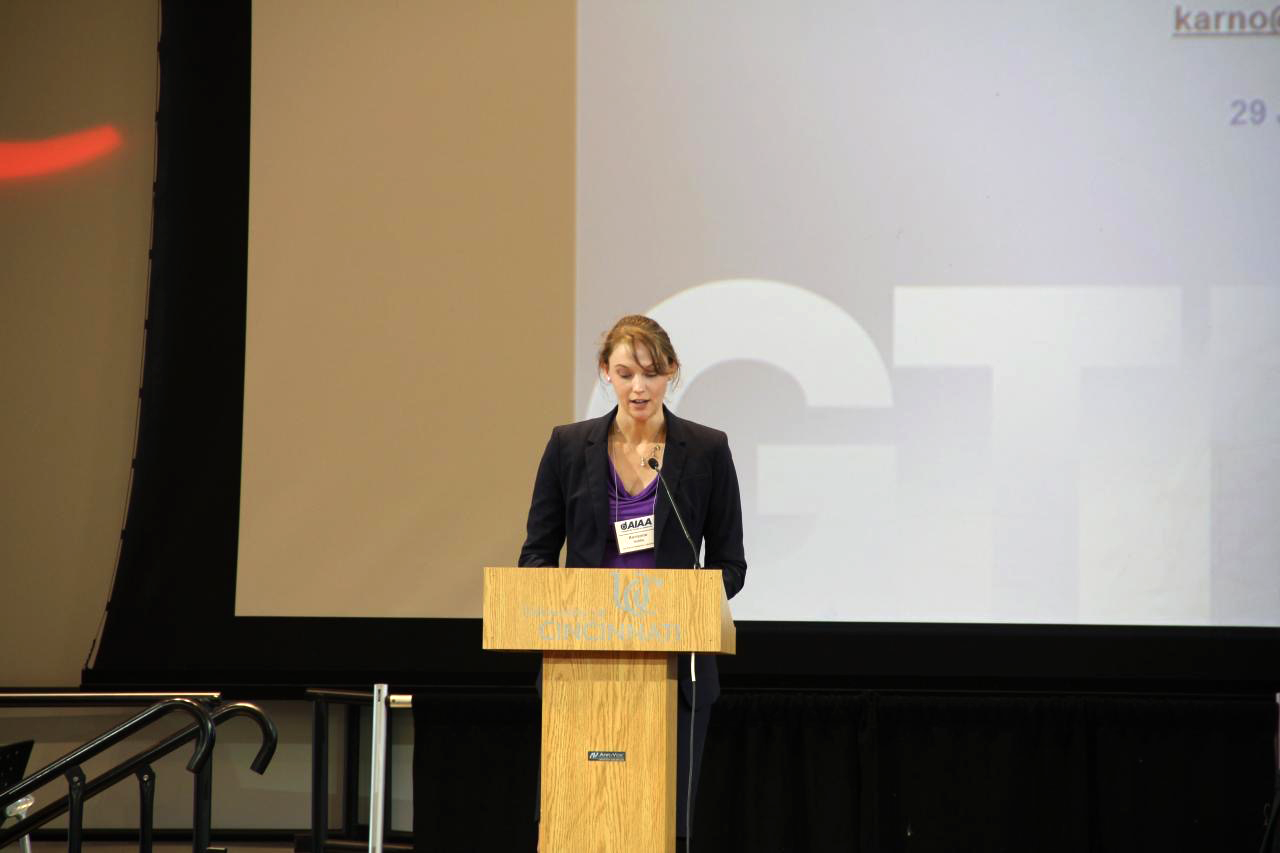
Dr. Kerianne Hobbs, ACT3 safe autonomy and space lead, Sensors Directorate, Air Force Research Laboratory, was recognized as a 2024 Associate Fellow of the American Institute of Aeronautics and Astronautics, or AIAA, in a news release Oct. 3, 2023. Hobbs is a nationally recognized expert in autonomy technologies for an area called run time assurance, and currently leads the Safe Autonomy Team at AFRL. This includes a Safe Trusted Autonomy for Responsible Spacecraft project team of 50 researchers coordinated across 10 geographically separated sites investigating development of safe reinforcement learning controllers, run time assurance algorithms and human-autonomy teaming for air and space applications. “When AFRL has multiple people selected as fellows or associate fellows at AIAA or another professional society in any given year, it reflects on AFRL’s relevance and leadership in aerospace research,” said Hobbs, ACT3 safe autonomy and space lead, Sensors Directorate. “Associate fellowship means that the contributions of scientists and engineers go beyond their impact to AFRL by pushing the larger aerospace community into the future.” (U.S. Air Force photo)
Hobbs is a nationally recognized expert in autonomy technologies for an area called run time assurance, and currently leads the Safe Autonomy Team at AFRL, according to the AIAA award citation. This includes co-leading the Safe, Trusted Autonomy for Responsible Spacecraft project team of 50 researchers coordinated across 10 geographically separated sites that investigates development of safe reinforcement learning controllers, run time assurance algorithms and human-autonomy teaming for air and space applications.
“Working at AFRL provides unique opportunities to contribute to a variety of cutting-edge research programs at every stage of development, from inventing a fundamental algorithm through testing designs in flight tests,” Hobbs said.
In her previous position as a research aerospace engineer in AFRL’s Autonomous Controls Branch, Hobbs researched the development of rigorous specification, analysis and bounding techniques to enable certification of autonomous controllers for aircraft and spacecraft applications, according to the AIAA award citation. Additionally, she was recognized for her role in the Automatic Collision Avoidance Technologies program, which included the Automatic Ground Collision Avoidance System that has saved 12 aircraft and 13 pilots to date.
Hobbs’s mentoring of more than 30 individuals since 2020 earned her the 2022 AFRL Summer Scholars Program Mentor of the Year and 2021 AFRL Aerospace Systems Directorate Mentoring Awards. She has also served as a leader in a local Air Camp for high school girls led by Women in Defense, which reaches girls from 18 local high schools, and continues to mentor K-12 and college students at various STEM events.
Nick Morley
Morley, senior scientist for high power photonics, Directed Energy Directorate, provides authoritative scientific technical counsel to the U.S. Air Force senior leadership on aspects of the science and application of high-power photonics.
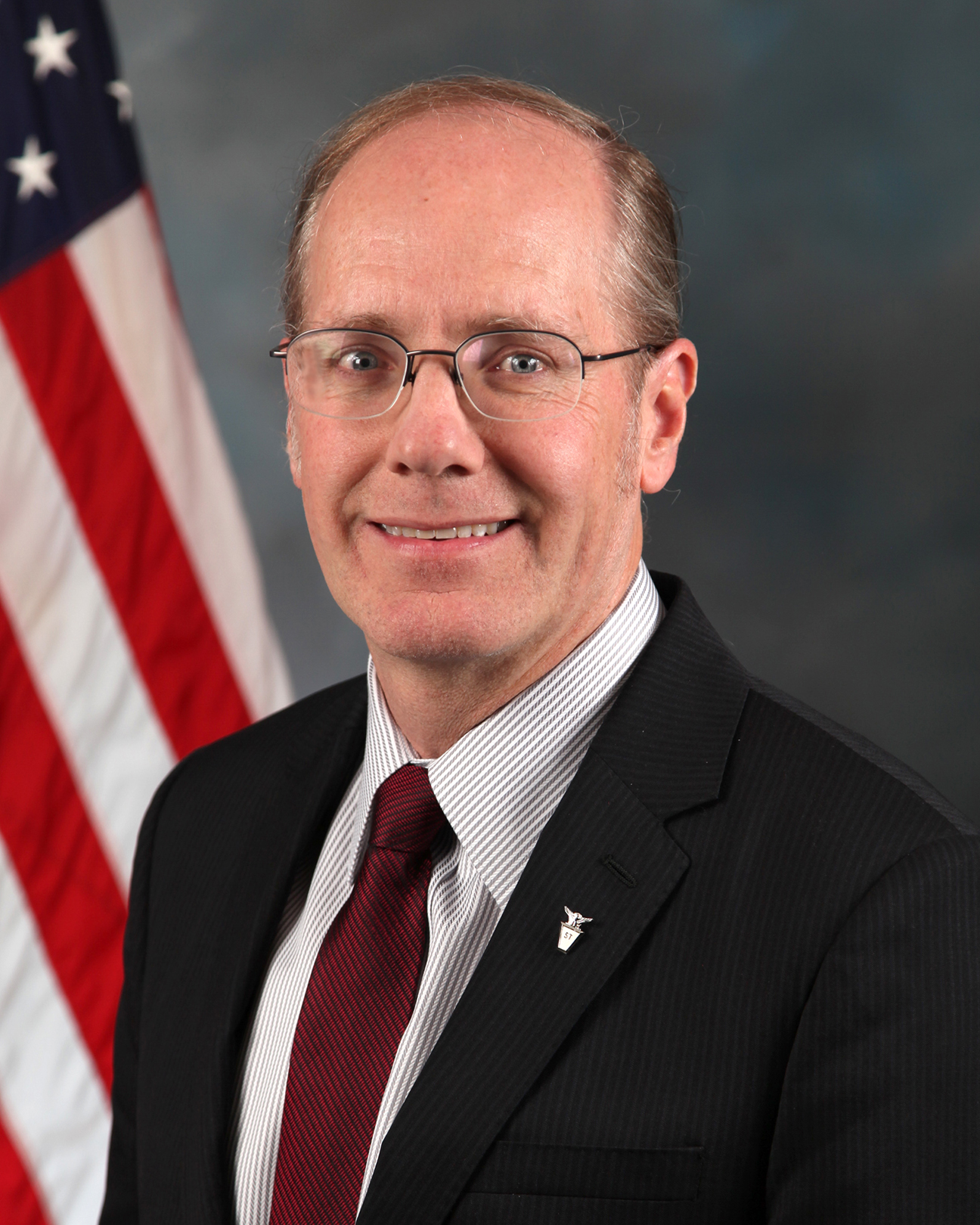
Dr. Nicholas Morley, senior scientist for high power photonics, Directed Energy Directorate, Air Force Research Laboratory, was recognized as a 2024 Associate Fellow of the American Institute of Aeronautics and Astronautics, or AIAA, in a news release Oct. 3, 2023. Morley provides authoritative scientific technical counsel to the U.S. Air Force senior leadership on aspects of the science and application of high-power photonics. “It’s such a great honor and to be recognized with such a distinguished crowd of previous AIAA Fellows,” Morley said. “The recognition helps amplify the important research going on at AFRL. It’s not just about me, but about emphasizing that the work we do is important.” (U.S. Air Force photo)
“It’s such a great honor and to be recognized with such a distinguished crowd of previous AIAA Associate Fellows,” Morley said. “The recognition helps amplify the important research going on at AFRL. It’s not just about me, but about emphasizing that the work we do is important.”
Some of Morley’s accomplishments include studies in high power photonics within AFRL; technical leadership in the design, development, integration, testing and transitioning of airborne high-power laser systems; and leading research efforts on target effects, thermal interactions, fluid dynamics, optical scattering, laser signature and laser system integration, according to the AIAA award citation.
“The accomplishments throughout my career include the important ones centered around pushing forward high-energy laser technology and applications for defense capabilities, such as missile defense and counter drone work,” Morley said.
Morley’s research experience has led to progress in all facets of laser weapons system development, modeling, simulation, diagnostic design and effects testing, improving the performance of high-power laser weapons systems across the Department of Defense, according to the AIAA award citation. As the laser systems strategic planning lead, he developed annual strategic plans, interfacing with Air Force Major Commands, product centers, other federal agencies, industry and academia to develop future investments within the technical area.
Morley has led directed energy delegations and developed collaborative research projects for AFRL with international partners, including Australia, the United Kingdom, the Netherlands, Canada and Israel.
“This would not have happened without the support, inputs and efforts of many researchers within AFRL and across the DOD,” Morley said.
About AFRL
The Air Force Research Laboratory, or AFRL, is the primary scientific research and development center for the Department of the Air Force. AFRL plays an integral role in leading the discovery, development and integration of affordable warfighting technologies for our air, space and cyberspace force. With a workforce of more than 12,500 across nine technology areas and 40 other operations across the globe, AFRL provides a diverse portfolio of science and technology ranging from fundamental to advanced research and technology development. For more information, visit www.afresearchlab.com.
